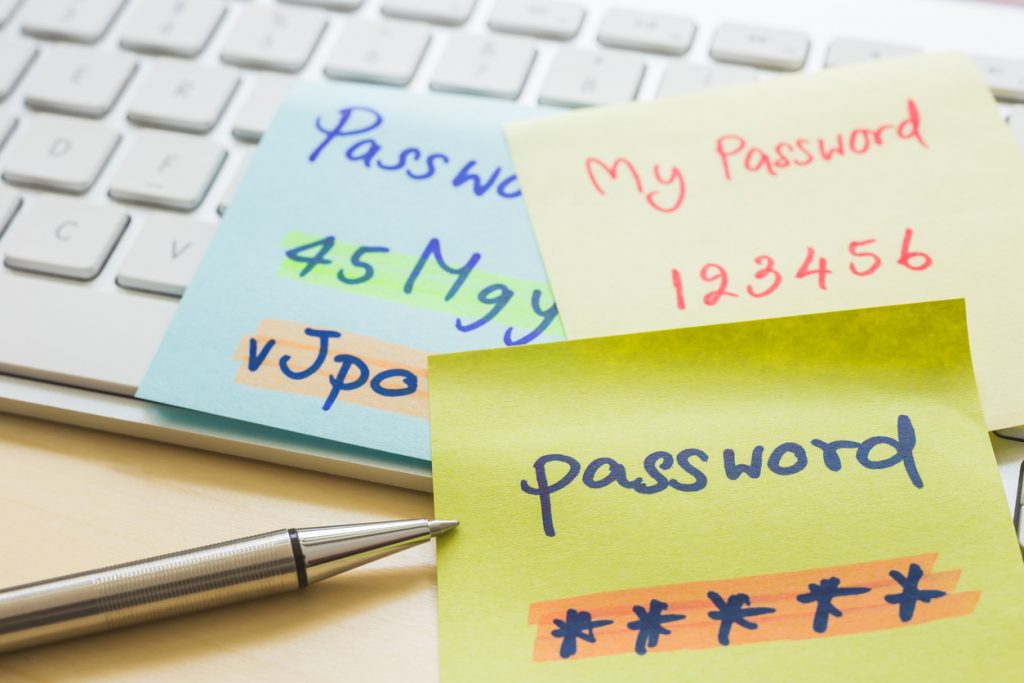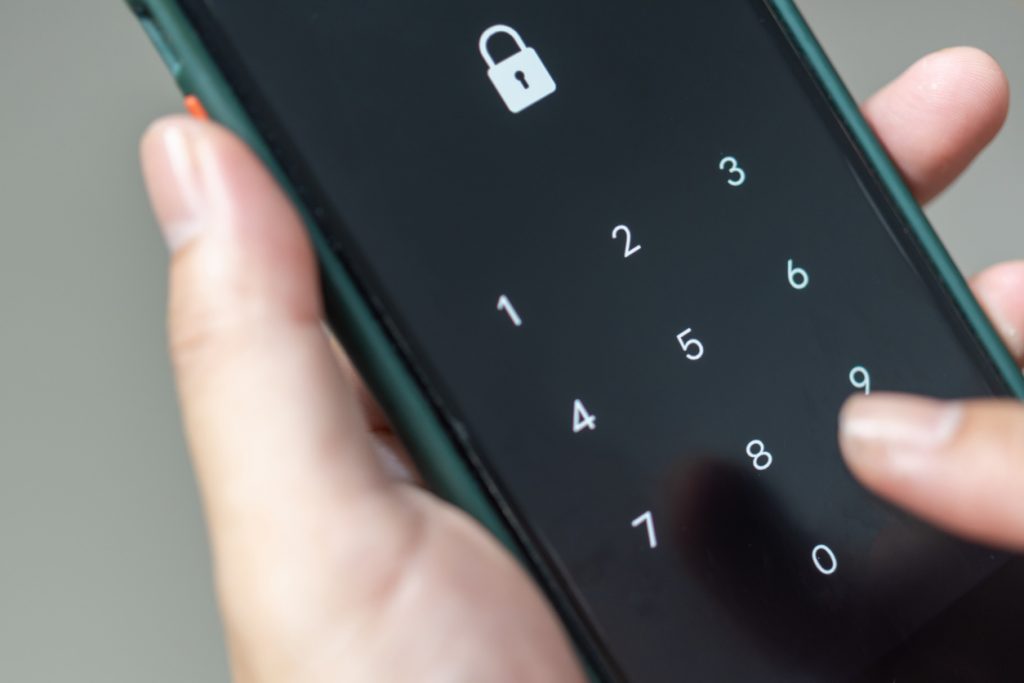In a U.S. study conducted in August 2023, Trend Micro identified significant differences in how various age groups approach and prepare for digital safety, including how they store their passwords, lock their phones, and whether or not they have two-factor authentication and digital estate plans set up. Read on for a breakdown of the statistics and advice on how to enhance your digital safety and that of your loved ones.
Passwords
Tracking and managing passwords can be challenging with so many online accounts making up our digital footprints, but following good password hygiene practices is essential for protecting our digital safety.
The study results reveal that 58% of 18–24-year-olds simply try to remember their passwords, and 31% engage in the risky practice of using only 1–3 passwords across all their online accounts. Furthermore, a concerning 39% of those aged 65 and older write their passwords down on a list — a strongly discouraged method due to the potential risk of loss or theft. Also, despite having the highest adoption rate among age groups, only 33% of individuals aged 35–44 opt to use a password manager, a strongly advisable decision.

When asked about their password management methods, an overwhelming majority of respondents across all age groups believed theirs to be safe and convenient. In light of some of the statistics in the paragraph above, this suggests a gap in awareness and understanding regarding the risks associated with poor password hygiene.
Are you or someone you know at risk due to poor password practices? A password manager, such as the one included with our newly launched Trend Micro ID Protection, can enhance your password hygiene by generating and securely storing strong, tough-to-hack passwords for you, eliminating the need for you to remember them yourself.
Two-Factor Authentication
Two-factor authentication (2FA) is a security measure requiring users to provide two forms of identification before accessing an account, typically a password and a temporary code. This adds an extra layer of protection, significantly reducing the risk of unauthorized access and enhancing overall account security.

Although it’s available for the majority of widely popular online platforms, including Amazon, Facebook, Google, and many more, 29% of respondents reported that they don’t turn on 2FA for their online accounts. It’s also worth noting that 2FA is much more popular with younger generations. For example, 84% of 35–44-year-olds enable 2FA, compared to only 59% of 55 to 64-year-olds and 57% of those aged 65 and older.
When respondents were asked why they don’t enable 2FA, 37% reported that they don’t like the added step to log in, while an alarmingly high number either don’t know they can use 2FA to log in (26%), don’t know how to log in with 2FA (24%), or don’t believe it’s any safer to use 2FA (13%).
These statistics highlight a clear lack of understanding about the benefits of 2FA and how to enable it. It’s a great idea to talk with friends and family members in your life about the importance of using 2FA. Why not spend five minutes helping them set it up for one of their accounts too, to show them how easy it is to do?
Locking Your Phone
When it comes to digital safety, having a phone that is not protected by some form of authentication, such as fingerprint or facial recognition or a PIN/password, is a huge potential risk. If an unprotected phone falls into the hands of a thief, it grants them unrestricted access to stored contacts, photos, videos, and all installed apps, including ones containing large amounts of personal/financial information, like email and banking apps.

Interestingly, various phone locking methods enjoy popularity across different age groups. For instance, facial recognition is notably more favored among younger individuals, with 52% of 18–24-year-olds and 41% of 25–34-year-olds using it. This stands in contrast to a mere 15% use rate among those aged 65 and older. The 65+ age group favors unlocking their phones with either a PIN (30%) or password (23%) the most. Despite this, a concerning 20% of this age group don’t use any type of authentication to unlock their phone, compared to just 4% of those aged 35–44.
When asked why they choose not to secure their mobile phone, 46% of the 65+ age group say they like the convenience of being able to access their phone easily, 16% believe it’s unlikely someone will try to use their device without their permission, 9% think it’s unlikely their device will be stolen, 21% don’t believe there is anything private or valuable on their device, and 7% don’t know how to set it up.
If you know someone who doesn’t secure their phone, take the time to help them navigate to their phone’s settings and choose an authentication method that works for them. Help them to test it out so they can be confident they can unlock their phone without issue. Facial recognition, if available on the device, is a quick and easy way for users with dexterity issues to easily unlock their phones without needing to input a PIN or password.
Digital Estate Plans
A digital estate includes all the digital assets left behind on the internet following a person’s passing, encompassing photos, videos, stories, documents, data, and social media profiles. A digital estate plan allows you to decide how you want to be remembered and how you want your digital assets to be shared or managed. Having a digital estate plan helps your loved ones manage your online accounts so they are not left open, unmonitored, and vulnerable to identity theft.
Surprisingly, despite those aged 65 and older being the most likely to have a will or living trust (62%), only a small fraction (3%) have a digital estate plan. This contrasts starkly with the 35% of 35–44-year-olds who have such plans, highlighting the fact that there is a generational gap when it comes to preparedness.

It’s essential to initiate conversations about the significance of establishing a digital estate plan with your loved ones. By doing so, not only can you help them actively shape their online legacy, but you can also contribute to keeping their data secure from potential identity thieves.
Lending a Helping Hand
Initiating conversations about digital security practices and providing guidance can empower our loved ones to navigate the online world safely and protect their digital information. Whether it’s introducing them to the advantages of using a password manager, explaining the benefits of 2FA, helping them set up an authentication method on their phone, or taking the time to help them create a digital estate plan, taking a few moments to share knowledge and offer assistance can make a significant impact on the digital safety of those we care about.
Results are based on a U.S. online survey conducted in August 2023, which included 1,565 participants. The sample was representative of the U.S. in terms of age, gender, and region. All participants were users or owners of at least one online account.
0 Comments
Other Topics
